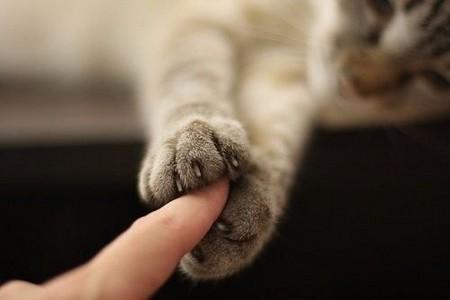 Improvements in diet and lifestyle have greatly lengthened the life span of both cats and humans but, at some point, grieving for your cat is an inevitability.
Improvements in diet and lifestyle have greatly lengthened the life span of both cats and humans but, at some point, grieving for your cat is an inevitability.
The currently ‘oldest cat in the world’ is approaching his 37th birthday in England. The oldest cat in Australia died a couple of years ago 3 days after his 36th birthday. However, the average age of cats is still 13 years, so to have a ‘friend for life’, you have to be an Indian Elephant’s Mahout or get a cockatoo, but if you get a cat, the chances are you are going to have to deal with their demise, (although hopefully at a ripe old age).
The ‘natural term’ of a cat’s life in the wild is about 5 years. Desexing increases it to 9 years, and keeping a cat desexed and indoors doubles that. Taking on a kitten is a very long term commitment (!), and we are responsible for all the important factors in that cat’s life – the main food that it eats (though many slip out and have other feeding stations..), where it lives, who it lives with, how much access to the outdoors it has. And when life is too hard, the time the light gets extinguished – we must often also take responsibility for when a cat goes from this life.
There are some cultures that prohibit euthanasia even of pets and badly hurt creatures. This is a wonderful philosophy and only creates a conflict when we have created an environment where survival is possible, but release from suffering is not. The modern, western influences have made much progress for health and safety for us and our animals, and has greatly extended the healthy enjoyment of life. However, death comes to us all, nevertheless, and I regularly see good people struggling with the concept of when is enough enough. Their cats are not always old (unfortunately – some unresolvable problems and diseases strike the young too), and there is not always an identifiable source of pain. Yet clearly the cat is either wasting away (the usual end stage of cancer), or is immobilised by some other process for which medication is no longer effective.
You know your cat’s state of health and state of mind much better than any blood tests or procedures are going to show. The best determinant of a commercial pilot’s capacity to fly for the next six months is their answer to the question ‘so how are you feeling?’, despite their having to run the gamut of ECG’s, eye and hearing tests etc every six months in order to maintain their licence. Your intimate knowledge of your cat is going to be your best guide – when you and your vet have determined that there is nothing more that you can or wish to do to improve your cat’s comfort, then there will come a moment when your cat looks at you and says ‘Enough is enough, I don’t want to do this any more’. I’ve seen it many times, and the cat is always ready to go then.
Sometimes the owner isn’t ready, and that is when the decision gets hard, and I have to point out that the cat wouldn’t be there except for the care the owner has given, and it is now time for their final responsibility – giving the cat a dignified end. No owner wishes pain or suffering on their feline friend, and it is always harder for those left behind than for those who go. However, as I said before, unless you get an elephant or a cockatoo, you will have to choose the moment when Enough is Enough. It is the last thing you can do for a friend in need.
Remember to be brave.

